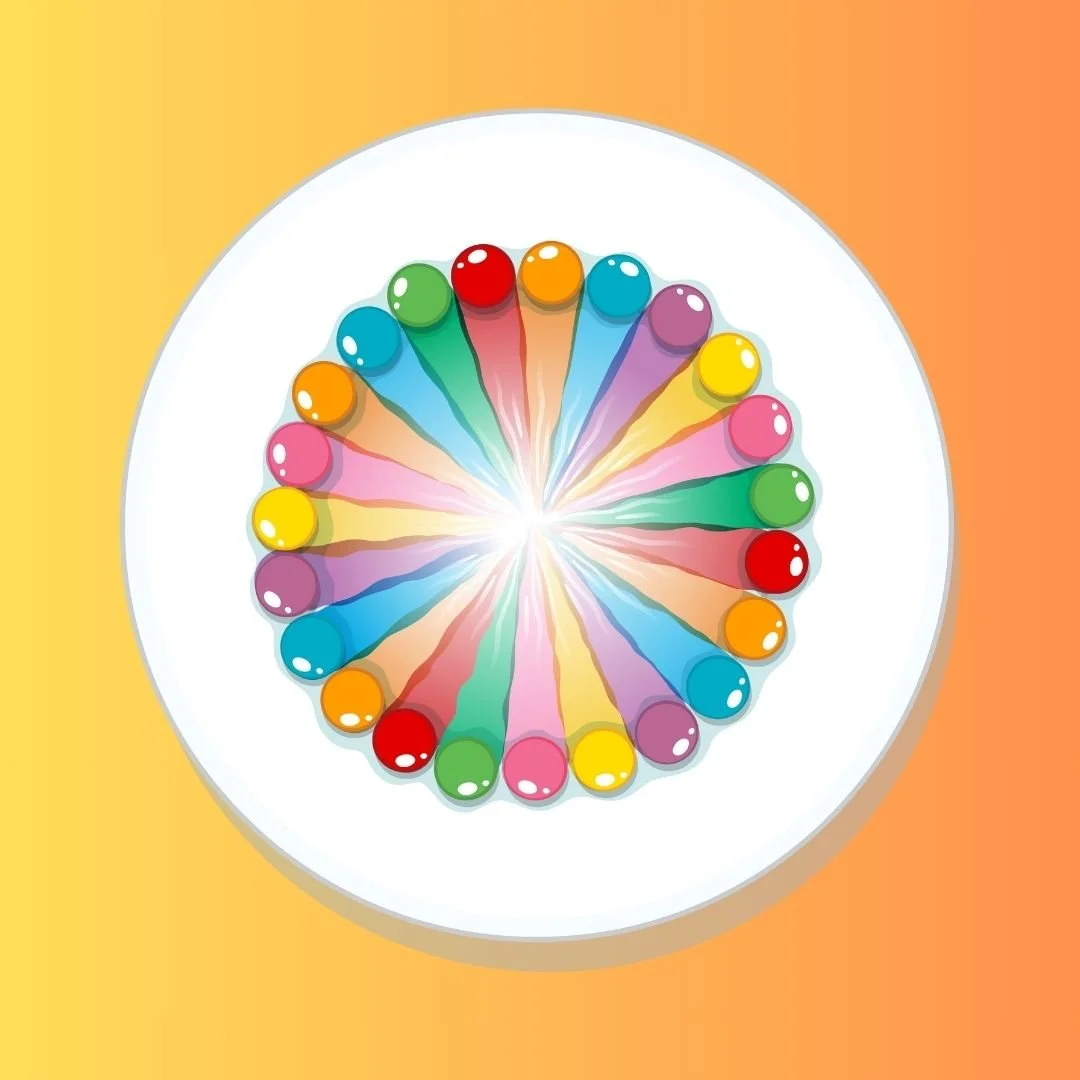Sweet Diffusion
(Elementary/Middle School)
What will students learn?
A Skittles diffusion experiment is a simple and engaging way to demonstrate the process of diffusion, which is the movement of particles from an area of higher concentration to an area of lower concentration. In this experiment, the color coatings on the surface of the Skittles dissolve in water, and the colored dyes then spread out, creating a visually appealing demonstration of diffusion.
What do you need?
A plate or shallow dish
Water
Skittles (preferably of different colors)
Steps:
Place the Skittles around the edge of the plate in a circular pattern. You can use a single color or multiple colors for variation.
Pour water into the center of the plate, just enough to cover the bottom without submerging the Skittles.
Allow some time for the water to interact with the Skittles. You will begin to see the colored dyes on the Skittles dissolve and diffuse into the water.
Observe and note the changes in color patterns and how the colored dyes spread over time.
Optional: You can compare the rate of diffusion in cold water and warm water by conducting two separate Skittles diffusion experiments. Use cold water for one plate and warm water for the other, and observe and document any differences in the rate and pattern of diffusion between the two plates. This additional step provides insight into how temperature influences the diffusion process.
Note: The experiment demonstrates the concept of diffusion, where the colored dyes on the Skittles move from an area of higher concentration (on the candy's surface) to an area of lower concentration (in the surrounding water).

